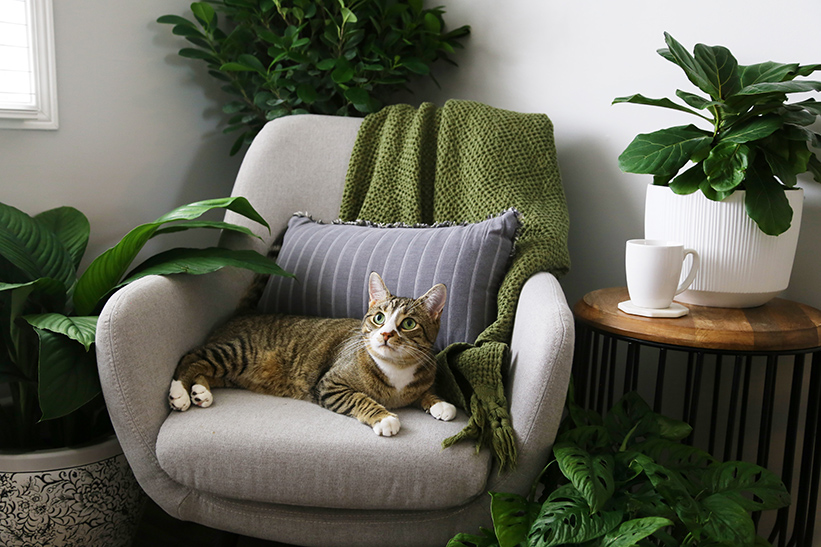HOUSEPLANTS
SO YOU WANT TO BUY A HOUSEPLANT
Houseplants can add so much to your space without asking for much; perhaps that is the reason they are becoming as loved as they are recently.
Many people lack confidence when it comes to keeping an indoor garden (or a garden of any kind for that matter), and have been discouraged from attempting due to lack of knowledge or time. Maybe you aren’t ready for the dedication that caring for an urban jungle would require, but a plant (or two) is easier than you think. More and more people are starting their journey to plant parenthood and we whole-heartedly support you! It’s safe to say we’re a little biased when it comes to our love for plants, but we believe you’ll agree with how awesome they are if you just give them a shot.
Caring for plants has a ton of benefits, including improving mental and physical well-being, improving the air quality in your home, and satisfying the desire to be close to nature (also known as biophilia).
Any plant will constantly grow, change, and respond to the care they receive and as such, can be immensely rewarding, all while adding life, warmth, and style to a space. Whatever your reason may be for wanting to become a plant parent, be hopeful! No one is born with a black thumb. By learning even the basics of houseplants, you can successfully care for your own little plant baby and, who knows, maybe even share that knowledge by the time you’re done.
biophilia
noun
bio-phil-ia | \ ˌbī-ō-ˈfi-lē-ə , -ˈfēl-yə \
: a hypothetical human tendency to interact or be closely associated with other forms of life in nature

It's important to understand and remember that plants are living beings.
All plants will grow and change with time, for better or for worse. They respond to the conditions that are provided for them while progressing through their life cycle, but don’t always blame a struggling leaf on your quality of care. You can’t expect your plant to be perfect. Not every imperfection in the plant requires a change in care or can be “fixed” by one. It's normal and natural for a plant to drop older leaves or develop brown tips as it matures. If you have an expectation for perfection from your plants, you will end up disappointed, that is a fact of the process. But if you shift your expectations to appreciating the new growth you get from your plant, you will have developed a new-found love (ahem, addiction).
Most plant care information is based solely on the type of plant that is being discussed, giving the impression that care is exclusively specific to each species or variety.
While different plants and their care preferences can vary immensely, a few different factors are the basis for a happy, healthy plant. It is generally safe to say that the best care for a plant is one that replicates its native environment as closely as possible. While it is impossible to have a rainforest in your living room, there are generalizations that can be made based on the natural ecosystem that it prefers. For example, a Calathea lancifolia (Rattlesnake Calathea) is native to the jungles of Brazil, and therefore prefers the filtered light that it would get through the dense canopy, the heat and humidity of the rainforest, and a relatively high amount of moisture.
This ecosystem could be replicated through sheer curtains to diffuse sunlight from a nearby window, the use of a humidifier, a closed terrarium or cloche for increased humidity, and more frequent watering. You could also assume a desert-dweller like a cactus or succulent would thrive in as much direct sunlight as possible and little water, as that would best replicate its native environment. With a basic understanding of plant systems, good observation skills, and google to determine native ranges, care considerations can be broadened and are based on two core, interdependent factors: light and water. Other factors are still extremely important, but if light and water conditions are not ideal, your plants will not thrive. It is incredibly important to note that almost all factors are relative to each other. Changes in light, humidity, or heat as the seasons change will affect the amount of water and nutrients the plant will consume for photosynthesis.




